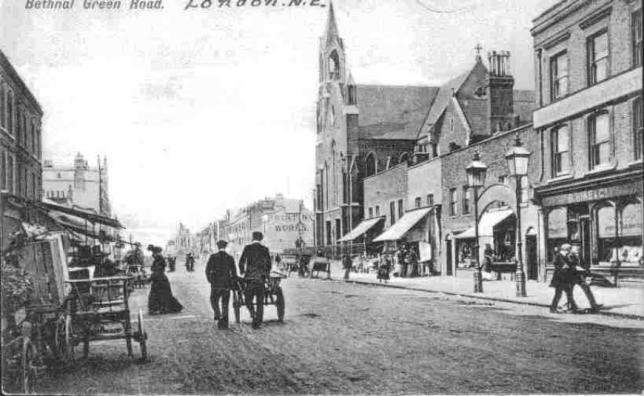
On the 15 May Ann Fadden was standing outside her front door, at one in the morning, as her brother Jeremiah Coghlan came by with a friend that he lodged with. Jeremiah was drunk, and an argument broke out. Truth is always hard to discern in court records where accusations of ‘he said, she said’ are thrown about, but it seems that Coghlan has some sort of long running feud with Ann’s husband, James Fadden.
At some point Ann and her brother Jeremiah started grappling with each other and she called him names. He may have had a rather distinctive nose because she later admitted shouting:
“Go along, you long-nosed vagabond and look out, he is down the street, and if he hits you he will give you something”.
She was referring to the fact that her spouse, James, was visiting friends just a little way off (‘listening to the newspaper being read’) and she was expecting him home anytime soon. In fact James had heard all the souting and was already on his way. When he saw Coghlan fighting with his wife, James intervened telling his brother-in-law to go home.
When the young man refused, Fadden threatened to punch him on his (quite distinctive) nose.
Ann again tried to stop things escalating, warning her brother off a fight with a stronger man but ‘Jerry’ wasn’t interested in being talked down. According to John Coghlan, brother to both of them, he was in a belligerent mood and growled that ‘I will give him a blow that he won’t be able to hit me’.
With that he shoved his sister out of the way and rushed at Fadden. Coghlan threw a punch and Fadden fell to the ground, where he lay senseless for several minutes. As soon as everyone recovered their wits they released James was bleeding from a cut to his neck and he was taken to Guy’s Hospital.
There the house surgeon, Mr James Wood, treated him but the bleeding couldn’t be stopped and his patient ‘gradually sank’. On the 3 June James Fadden died and now the charge against Jeremiah had become one of murder or manslaughter.
Coghlan was arrested the next morning by PC George Vellacott (M224). Coghlan was still in a rage and in no mood to apologies for what he had down. At this stage of course he was being arrested for wounding, not for killing the other man but he hardly helped his own case. As the policeman explained that he must take him to the station the young man declared:
‘If I am given in charge I shall do for the b—; if I get over this I shall do for him’.
A knife was found at his lodgings that seemed likely to have been the murder weapon and the police took it as evidence to be produced later at trial.
Having been remanded several times by the magistrates at Southwark on 11 June 1859 he was fully committed for trial.
Jeremiah appeared at the Old Bailey on 13 June, just days after his committal by Mr Burcham. He was accused of ‘willful murder’ but convicted of manslaughter. Only one person spoke up for him there, William Jennings a leather dresser, who had known him for ten year and lived with him. Jeremiah was only 22 in 1859 but it wasn’t his first brush with the law. He had been imprisoned the year before, although it is not clear why.
From the records of the Digital Panopticon we also learn that Coghlan was Roman Catholic (and so probably of Irish ancestry) and worked as a dyer (and industry closely connected to the Thames by Bermonsdey).
He was transported to Australia for a sentence of 20 years, arriving in Western Australia in 1862 after a spell of imprisonment in England. Both his sister and his brother gave damning evidence against him in court.
What was wrong with this young man? Was he unable to control his temper? Had he completely alienated his family? It is a very sad story
[from The Standard, Monday 13 June 1859]








